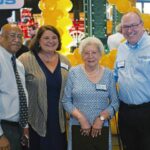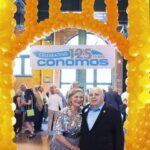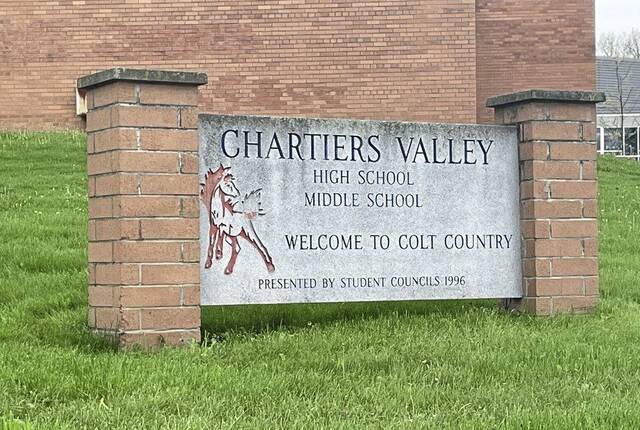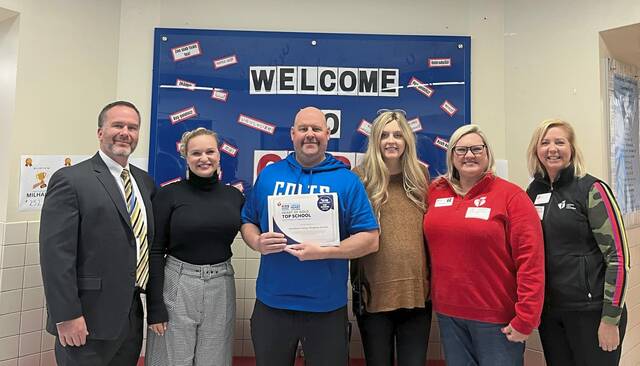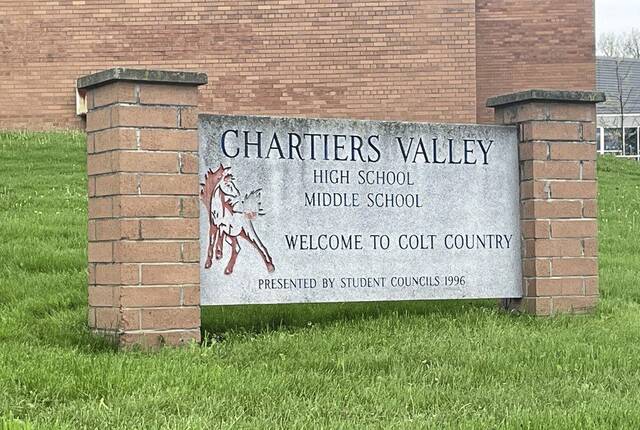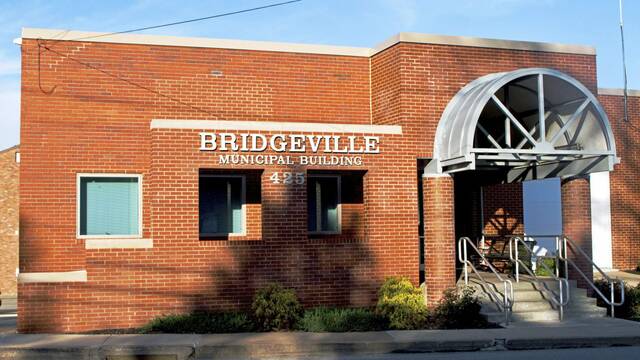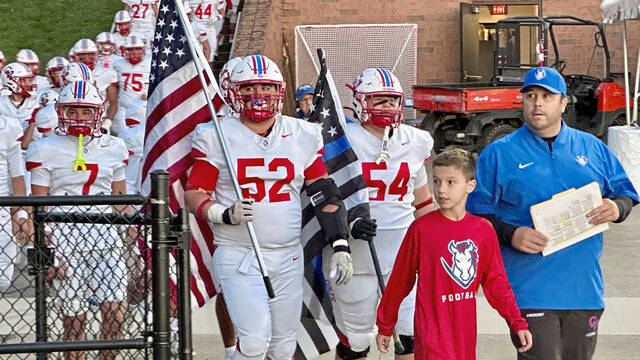New arrivals to the immigrant processing station at Ellis Island often received new names, thanks to various languages and alphabets being lost in translation.
Such was the case in 1890, when a teenager from Greece attempted to introduce himself as John Theodore Megalokonomos.
As far as the U.S. government was concerned, he left the island with the truncated surname of Conomos, “an accommodation appreciated by current family members.”
That’s according to a printed commemorative program given to guests at a July 15 celebration of a milestone anniversary for the industrial-painting company that the erstwhile Mr. Megalokonomos co-founded in 1898.
“Just to put 125 years into perspective, statistics show that after only five years, 48.4% of small businesses fail,” his great-granddaughter Tessie Kucherawy said. “And that number jumps to almost 70% after only 10 years in business.”
She provided the greeting for hundreds of well-wishers gathered in the Mueller Center ballroom at the Senator John Heinz History to honor the longevity of what today is John B. Conomos Inc., headquartered in Bridgeville since 1973.
Among the guests was Bridgeville Mayor Betty Copeland, who presented a congratulatory proclamation to complement similar accolades from Gov. Josh Shapiro, the Pennsylvania House of Representatives and Allegheny County Executive Rich Fitzgerald.
“As a fourth-generation Conomos family member who currently works in the business, it is both personally and professionally exciting to be here,” Kucherawy, who oversees the human resources and marketing departments, said. “People often talk about having a work family. And I do, literally. Even those who I am not technically related to, I know they’ll be there for me if I needed them, and I’ve witnessed this firsthand.”
Her father, the company’s namesake, serves as chairman and CEO, following his presidency from 1968 to 2003. Chris Kucherawy, Tessie’s husband, has held the latter position since 2017, after joining the firm 16 years before as its first director of marketing.
‘John learned quickly’
The Conomos/Megalokonomos story begins with young John T. leaving home to become a sailor.
“Sailing ships required learning many skills that would prove useful later in life’s work, and John learned quickly,” the commemorative program states. “Climbing the masts, rigging the sails and cleaning and painting the hulls because second nature to him.”
After his arrival and rechristening in the United States, he traveled to Pittsburgh, where family members helped him find work. According to the program:
“John’s entrepreneurial enthusiasm was recognized by William Manos, a family friend from Kythera with business and financial experience. While considerably older than John, William nevertheless could see that his experience combined with John’s practical skills provided the chemistry for a business that would seek projects requiring painting of complex structures.”
Business ebbed and flowed, with John spending a winter in Florida diving for sponges to help pay the bills before he became sole proprietor with Manos’ 1920 retirement, just in time to ride the wave of post-World War I prosperity.
Then came the Great Depression, and the reversal of fortunes prompted John’s son, William, to leave his job as auditor in favor of the family business. It struggled, regardless: The only job at the time was on the new Huey P. Long Bridge, spanning the Mississippi River in Louisiana.
“That’s when a contract was worth $35,000, employees were paid 11 cents an hour to work without safety harnesses and a good lead paint job would take about a year,” Cathy Rubin wrote in a 1998 Tribune-Review article marking the firm’s centennial.
‘Painters busy at dizzy heights’
Bill Conomos took over after his father’s death in 1935, and World War II helped the company’s cause with the awarding of government painting contracts. Prosperity continued after the conflict ended, with the company taking on many a major project, with Richard Tucker writing about one for the Baltimore Evening Sun in 1952:
“Dangling at heights up to 200 feet above the water but generally unnoticed by travelers rushing east and west above them, gilded men who sometimes look like visitors from another planet are putting the finishing touches on Maryland’s new Chesapeake Bay Bridge.
“When they are through, about Nov. 1, they — and fellow workmen streaked with reddish-brown and blue — will have sprayed and brushed more than 24,000 gallons of paint on the 32,000 tons of steel linking the state’s eastern and western shores.”
The potential for peril apparently was on the minds of Tucker and the colleague who composed the article’s headline, “Bay Span Painters Busy at Dizzy Heights.”
“Occasionally a bucket of paint goes over the side into the bay. If it is a big one from the center span it sometimes hits the water with such impact that it splits wide open, a grim reminder of how high they are,” he wrote. “But bridge painters don’t dwell long on things like this.”
Today, Conomos implements a progressive accident prevention program for industrial painting and related services, complying with all federal Occupational Safety and Health Administration standards, according to the company’s website, which states:
“Our total recordable incident rate has been less than the industry average for 10 years, and two of our last five years have been accident-free.”
In the 125 years since John T. Conomos teamed up with fellow Kytheran William Manos, forming and sustaining close relationships has been a hallmark of the business, as Tessie Kucherawy acknowledged with regard to the room full of guests at the History Center.
“All of you have played a special part in our company’s ability to achieve this significant milestone. So it is only fitting that we should take this time to celebrate this occasion together,” she said. “Whether you are a customer, an employee, vendor, family member or friend, we want you to know we are grateful for your hard work, dedication and support over the years. We could not be here today without all of you.”











